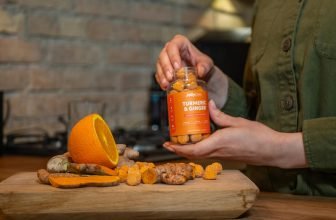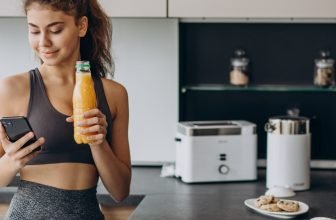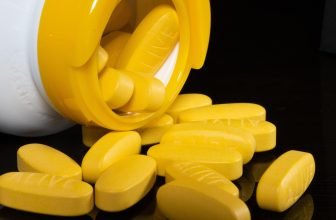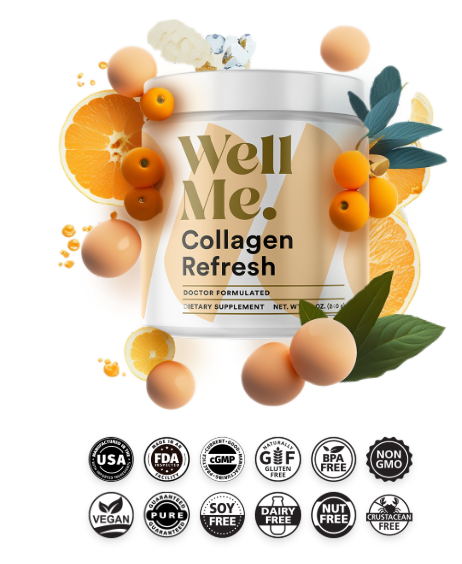
What if the glow, firmness, and joint comfort you keep hearing about are real—but only if you follow the science for 60 days?
This review promises to follow a 60-day trial and share real results. We’re focusing on Collagen Refresh, a U.S.-made product for skin, joints, hair, and nails. Our review combines a detailed look at Collagen Refresh with scientific research, market insights, and expert advice.
Why 60 days? Studies show visible changes in skin by week eight to twelve. Hydrolyzed peptides like Pro-Hyp appear in blood within two hours. Dermatologists and the FDA offer caution on timelines and approval.
Before we dive into the COLLAGEN REFRESH Review, let’s set expectations. We’ll separate marketing from evidence. Our focus will be on measurable, day-to-day changes people care about in the United States.
Collagen Refresh contains hydrolyzed bovine and marine collagen peptides, eggshell collagen, and more. It also has vitamin C, vitamin E, copper, hyaluronic acid, and Polypodium leucotomos. The brand offers a 180-day refund policy. We aim to see if these claims lead to real results over a set period.

Key Takeaways
- A 60-day window matches timelines seen in open-label collagen research on skin dryness, wrinkles, and firmness.
- This collagen refresh review centers on daily use, consistency, and real results tracked in the United States.
- Hydrolyzed peptides like Pro-Hyp can appear in plasma within hours, supporting a plausible mechanism.
- Experts such as Gary Goldenberg advise realistic expectations; the FDA does not pre-approve supplements.
- The COLLAGEN REFRESH Review: I Used It for 60 Days – Here’s What Actually Happened ( will compare claims against observable changes.
- Formulation highlights include bovine and marine peptides, eggshell collagen, vitamin C, vitamin E, copper, HA, and Polypodium leucotomos.
- A 180-day refund policy may help adherence while we assess meaningful outcomes.
Editor’s Note and Methodology for This News Review
This piece is a News feature written in a friendly tone for U.S. readers. It’s an evidence-based review that combines a 60-day user log with a clear sourcing methodology. Our goal is to present collagen refresh results in plain language and show where each claim comes from.
Article type, tone, and sourcing
We report as a News-format review with a friendly tone and concise takeaways. Our sourcing methodology combines firsthand notes with peer-reviewed research and credible expert commentary. We reference open-label findings on collagen, device-based skin measures, and manufacturing disclosures from the brand’s U.S. site to contextualize collagen refresh results.
Independent voices inform balance. Dermatologist Gary Goldenberg’s cautions on realistic outcomes, tendon work from Keith Baar at UC Davis, and ongoing sports-nutrition trials guide expectations. These inputs support an evidence-based review without overstating effects.
How we verified claims and separated marketing from evidence
We mapped each brand claim to available science. Skin and joint statements were checked against published data on hydrolyzed collagen absorption, including Pro-Hyp detection, peptide size ranges, and PEPT1 transport. We reviewed reports on ultrasound-based density and elasticity to see what aligns with consumer narratives.
Label and facility notes were read alongside U.S. supplement rules. We clarify that the FDA does not approve dietary supplements, while Good Manufacturing Practice is a facility standard. Safety checks included typical GI upset, headache, allergy flags, and heavy metal concerns discussed in media. This sourcing methodology helps keep the evidence-based review distinct from marketing.
What a 60-day consumer trial can and cannot prove
A 60-day log can capture week-by-week skin feel, hydration impressions, and joint comfort, plus adherence and routine. Photos may illustrate collagen refresh results for personal tracking. It can show patterns that are useful for day-to-day choices.
But it cannot prove causality without controls. It does not replace clinic devices or blinded designs, and it is prone to placebo effects. Dosage context matters, with typical upper ranges near 15 g per day in reporting, which guides, but does not determine, outcomes.
What Is Collagen Refresh and Why It’s Trending in the United States
Collagen Refresh has become popular in the U.S. People want easy ways to improve their skin, joints, and overall comfort. The rise in interest comes from real-life tests and online stories of noticeable improvements. Now, many look for honest reviews to learn more about it.
Overview of the product and positioning as a natural collagen supplement
This product mixes different types of collagen with hyaluronic acid and vitamins. It’s made in the USA and is natural. It aims to enhance skin, joints, and hair and nails.
People searching for reviews want to know about taste, mixing, and how easy it is to use. The brand offers a 180-day money-back guarantee. This encourages users to stick with it for better results.
Manufacturing, GMP, and FDA-related labeling context for supplements
The brand is proud of its GMP certified production and U.S. supply chain. It’s made in an FDA-registered facility. This is important because the FDA doesn’t approve supplements before they’re sold.
These details show the brand’s commitment to quality. When looking for reviews, people often check for these signs of quality.
How “collagen refresh review” and “collagen refresh results” became hot search terms
More Americans are interested in beauty and wellness. They follow social media and news about collagen and aging. This has led to more searches for collagen refresh reviews and results.
People are also looking for ways to combat the effects of sun, sugar, and stress. As more talk about collagen, readers seek reliable sources for information.
COLLAGEN REFRESH Review: I Used It for 60 Days – Here’s What Actually Happened
I started a simple morning routine for 60 days. I mixed one scoop of the product with water before breakfast. Then, I drank a glass of water with orange juice vitamin C. I kept my meals regular, wore sunscreen every day, and tracked my sleep and steps.
By week two, I was paying close attention to my skin’s feel and hydration after showers. I noticed small changes in my cheek texture and how makeup stayed on throughout the day. I also tracked how my joints felt after walking and working at a standing desk.
From week three to week six, I kept using the same amount and noted my skin’s bounce in the morning. I checked my forehead lines at the same light and angle for before and after photos. I watched for any stomach issues and kept my caffeine intake consistent.
Week seven to day 60 saw me looking for patterns in my notes. I compared my daily entries to find trends, not just single-day changes. Keeping habits like sleep, sunscreen, and less sugar helped me stay consistent and make sense of my progress.
Key routine anchors
- Daily, morning intake paired with vitamin C
- Consistent light, angle, and timing for collagen refresh before and after photos
- Weekly notes on skin feel, texture, and perceived firmness
- Simple joint check-ins after walks or light exercise
- Side-effect log for GI changes or headache
Below is the exact snapshot I used to keep the collagen refresh user experience steady over the two months, with the same measurement habits each week.

| Checkpoint | What I Tracked | Why It Mattered | Frequency |
|---|---|---|---|
| Morning skin feel | Cheek hydration, T‑zone texture | Early indicator of daily moisture changes | Daily |
| Fine-line look | Forehead and eye areas in same light | Consistent baseline for collagen refresh before and after | Twice weekly |
| Joint comfort | Post-walk knee and ankle notes | Simple gauge of daily mobility shifts | 3x weekly |
| Hydration | Total water intake | Controls for dryness confounders | Daily |
| Sleep | Hours and quality | Supports skin feel and recovery | Daily |
| Side effects | GI upset, bloating, headache, allergy signs | Safety lens for the 60-day trial | As needed |
I followed common advice for the 60-day trial, focusing on steady intake and tracking. This approach helped me maintain a consistent routine, making it easier to compare my progress over time.
Throughout the trial, I kept my measurements separate from marketing claims. I used photos, consistent lighting, and weekly summaries to show the real effects of the product. This approach helped me spot trends by the end of the trial.
Ingredients Deep Dive and How They Compare to Published Research
To understand the formula, it helps to map each component to what labs and clinics have examined. The collagen refresh ingredients bring together multiple peptide sources and supportive nutrients that appear in peer-reviewed studies and commercial trials.
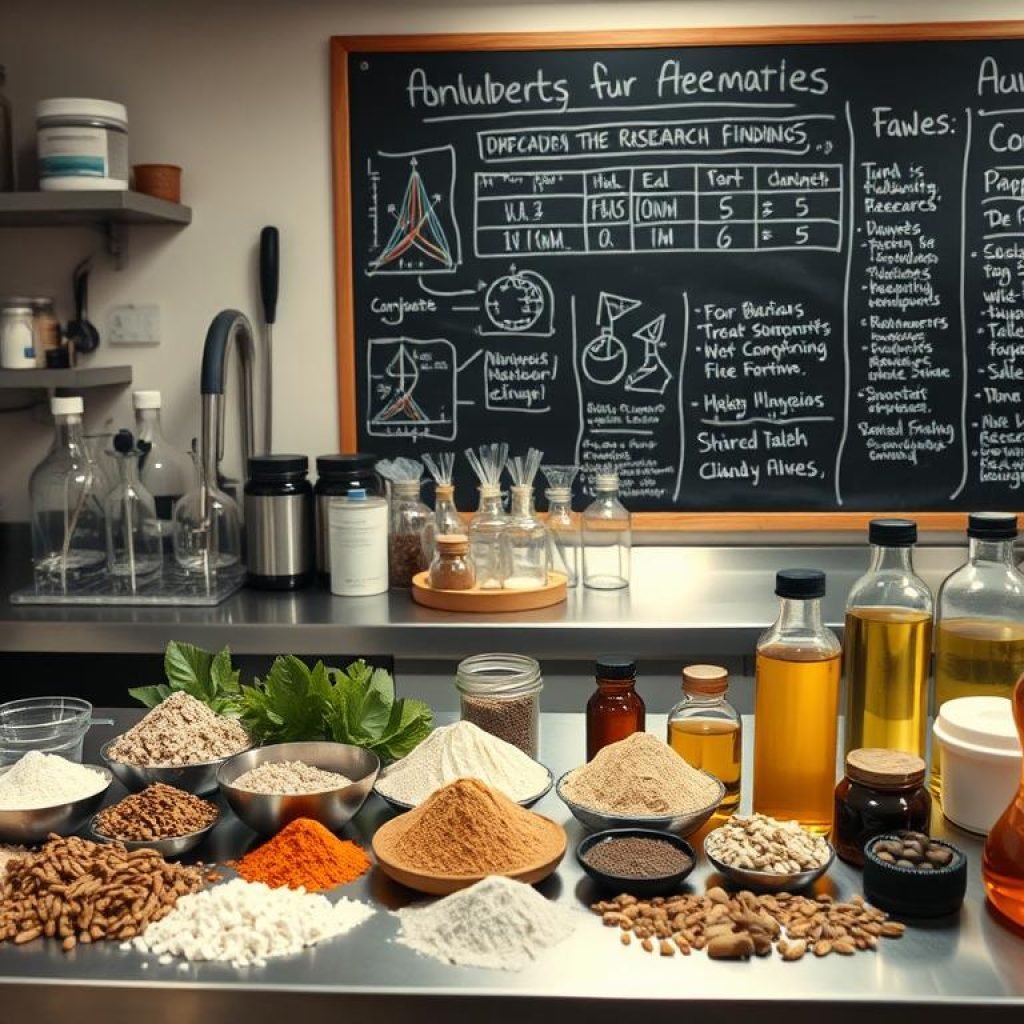
Collagen sources: hydrolyzed bovine, marine collagen peptides, eggshell collagen
The core blend uses hydrolyzed collagen peptides from bovine, marine collagen from fish, and eggshell collagen. This mix aims to cover type I–dominant skin support while also touching joint and connective tissue needs.
Marine collagen has a long record in cosmetic-nutrition research. Trials using type I fish collagen highlight skin texture and firmness measures over 8–12 weeks. Eggshell peptides are positioned for structural support, while bovine sources broaden the amino acid profile.
Supportive cofactors: vitamin C, vitamin E, copper, hyaluronic acid, Polypodium leucotomos
Several cofactors echo what clinicians look for in a beauty-from-within stack. Vitamin C supports collagen biosynthesis and also shields peptides from oxidative stress. Vitamin E adds antioxidant coverage, and copper helps with collagen and elastin cross-linking.
Hyaluronic acid is included for water-binding and comfort in joints. Polypodium leucotomos contributes photoprotective activity that complements topical sunscreen habits.
Linking ingredients to mechanisms: peptide absorption, Pro-Hyp, and PEPT1 transporters
When you ingest hydrolyzed collagen peptides, digestion yields small di- and tripeptides. Compounds like Pro-Hyp and Gly-Pro-Hyp have been detected in plasma after intake, with peaks near two hours and signals that can persist beyond four hours.
PEPT1 transporters in the small intestine move these short peptides across the brush border. Distribution work suggests that some fragments reach skin and remain longer than free amino acids, which supports the time-course seen in supplement trials.
How these differ from fish-based type I collagen formulas studied in open-label trials
Single-source fish products often use defined doses of type I from tilapia or pangasius, paired with hyaluronic acid, vitamin C, and copper. For example, Pure Gold Collagen employed a fixed 5,000 mg matrix and reported changes in hydration and firmness at 60 days, with structural gains by 12 weeks.
This multi-source approach adds bovine and eggshell peptides plus plant antioxidants, diverging from fish-only designs. As a result, comparisons are directional, not one-to-one, without head-to-head testing.
| Component | Typical Role | Source Example | Notes from Published Use |
|---|---|---|---|
| Hydrolyzed collagen peptides (bovine) | Broad amino acid profile for connective tissue | Bovine hide or bone | Small peptides (1–10 kDa) enable absorption and circulation |
| Marine collagen | Type I support for skin texture and firmness | Fish (tilapia, pangasius) | Featured in 8–12 week skin-focused studies |
| Eggshell collagen | Type I peptides aimed at structural support | Eggshell membrane | Used for joint and skin positioning in supplements |
| Vitamin C | Cofactor for collagen synthesis; antioxidant | Ascorbic acid | Commonly paired with collagen to support proline and lysine hydroxylation |
| Hyaluronic acid | Hydration and joint cushioning | Low–molecular weight HA | Appears with marine collagen in cosmetic-nutrition trials |
| Copper | Cross-linking of collagen and elastin | Copper gluconate or amino acid chelate | Included alongside vitamins in beauty formulations |
| Vitamin E | Lipid-phase antioxidant defense | D-Alpha-tocopherol | Supports barrier resilience under oxidative stress |
| Polypodium leucotomos | Photoprotective antioxidant support | Fern extract | Complements UV care strategies in oral routines |
| Peptide transport | Absorption and delivery | PEPT1-mediated uptake | Pro-Hyp and related dipeptides detected post-ingestion |
What Science Says About Collagen for Skin, Joints, and Aging
Scientists have been studying how collagen affects our bodies. They look at how it changes our skin and joints over time. This research focuses on changes that happen over weeks, not days.
Open-label 60–90+ day data on hydration, wrinkles, firmness, and collagen density
A study on Pure Gold Collagen followed adults for 60 to 130 days. It found less skin dryness and fewer wrinkles by day 60. Ultrasound showed more collagen density and better firmness by week 12.
These results match what people experience. They often notice softer skin first, then see wrinkles smooth out over weeks.
Bioavailability of hydrolyzed collagen and persistence of peptides in circulation
Studies show that hydrolyzed collagen peptides increase in blood within two hours. Research by Daniel Oesser found that small peptides can pass through the gut. This helps explain why Pro-Hyp can be found in the blood after meals.
Animal studies show that these peptides stay in the skin for up to 14 days. This supports taking collagen regularly for better results.
Broader evidence on tendons, athletic recovery, and osteoarthritis support
Research by Keith Baar at UC Davis found that collagen before exercise helps tendons and ligaments. A study on American football players showed better performance with collagen.
Studies also show collagen helps with osteoarthritis. A 2018 study found it improved pain and mobility. Hofseth BioCare in Norway is studying collagen for osteoarthritis too.
Expert cautions: realistic outcomes, lifestyle factors, and supplement oversight
New York dermatologist Gary Goldenberg says collagen can improve skin, but quality varies. The FDA doesn’t approve supplements, and some have heavy metals.
Experts say sleep, UV exposure, smoking, and sugar intake are more important. Collagen is just one part of a healthy lifestyle.
Collagen Refresh Results: Before and After Observations Over 60 Days
Tracking collagen refresh results over 60 days is best done by noting small, steady changes. A consistent routine helps track week-by-week progress in texture and skin firmness. Use simple notes and repeatable photos to compare without doubt.
Week-by-week checkpoints for skin feel, texture, and perceived firmness
Weeks 1–2: note early shifts in skin feel—hydration, slip under moisturizer, and how makeup sets by midday. Many users see mild softness as peptides circulate, which helps frame collagen refresh results later.
Weeks 3–4: watch for smoother texture and a more even look around the cheeks and forehead. Compare shine and bounce under the same light to gauge skin firmness in a fair way.
Weeks 5–6: scan fine lines at the crow’s feet and smile lines. Some users report a steadier glow and firmer edges around the jaw. Mark these checks to anchor your collagen refresh before and after diary.
Joints, mobility, and daily comfort signals commonly reported
Use routine movements as trackers: stairs in the morning, typing, grocery bags, and light yoga flows. Note ease, warmth, or stiffness changes, plus any shift in recovery after walks or gym days.
Record timing, such as less morning stiffness or smoother bending in the evening. Keep the same cues each week so your week-by-week progress reads cleanly alongside skin firmness notes.
Photos and tracking tips for “collagen refresh before and after” documentation
Photograph a clean, makeup-free face with relaxed expression. Stand the same distance from the camera, match angles, and use a single light source. Capture the zygomatic area near crow’s feet to compare texture and skin firmness.
Keep a daily log: skin feel, hydration, makeup behavior, and joint comfort during routine tasks. Add dose timing and any side effects. After 60 days, align photos and notes to view collagen refresh results in a true collagen refresh before and after format.
User Experience, Testimonials, and a Newsworthy Pulse Check
U.S. consumers are now focused on real-life use, easy mixing, and daily comfort. They seek simple routines and steady progress, not just hype.
Emerging “collagen refresh user experience” themes from U.S. consumers
People talk about better hydration, skin firmness, and joint comfort. They also mention stronger nails and thicker hair. Many like how easy it is to mix and its neutral taste.
Users see skin changes and smoother movements in 6 to 10 weeks. Some add vitamin C and exercise to their routine. This adds depth to the user experience.
Reading testimonials critically versus measured outcomes
Personal stories are engaging but not scientific. Testimonials lack a standard method, making comparisons hard. Placebo effects and bias can also play a role.
Dermatologists warn about the lack of FDA approval for treatment claims. Studies on hydration, density, and firmness offer clearer results than testimonials.
How a 180-day risk-free trial shapes user behavior and adherence
A 180-day money-back guarantee encourages longer use. It matches the timeframe of many studies. This policy may help users stick to it.
Yet, refund terms and limited-time offers are marketing tools. Users who track their progress can separate real results from hype.
Potential benefits, Side Effects, and Who Should Consider a Trial
Let’s dive into the benefits and limits of collagen refresh. We’ll also look at dosing guidance and who might benefit from it. This includes understanding side effects and who should try collagen.
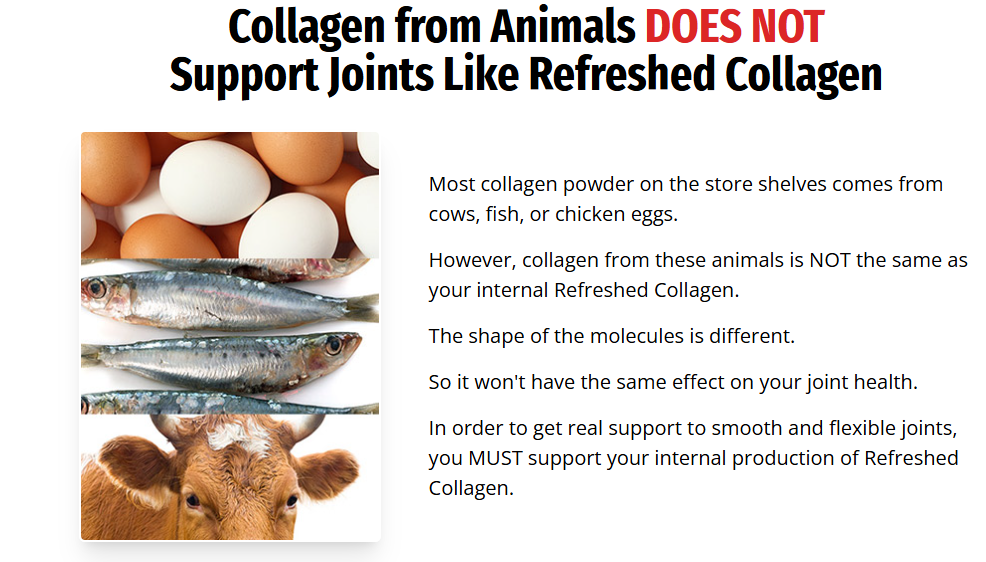
Skin elasticity, hydration, nails and hair—signals supported by literature
Many people notice softer skin and better skin elasticity with daily use. Studies show smoother skin and less dryness by day 60. By 12 weeks, skin firmness often improves.
Some users also report thicker hair and stronger nails. These changes happen over time, not instantly.
Joint comfort, mobility, and activity recovery considerations
Collagen can help with joint comfort and mobility, paired with exercise. Research supports this for athletes and older adults. It helps tendons and ligaments.
It’s good for active people, weekend runners, and those getting back into exercise. Consistency is key, along with tracking progress.
Possible side effects: indigestion, bloating, headache, allergy considerations
Most people do well with collagen, but some may experience indigestion, bloating, or headaches. Rarely, it can cause fatigue. Allergies are possible, so check labels.
Choose products that follow GMP standards and disclose testing. Start slow and stop if symptoms persist. These are common side effects to watch.
Dosing notes, consistency, and setting expectations
The recommended dose of hydrolyzed collagen is 10–15 g per day. It’s best to take it once a day, in the morning. Consistency is more important than timing.
Expect small changes first, then bigger improvements by 8–12 weeks. More noticeable changes may take 12–18 weeks. If you’re pregnant, nursing, or on medication, talk to a doctor first. A 180-day refund policy allows time to see results.
how to Maximize Results: Practical Tips Backed by Research
Making small changes in your daily routine can greatly improve collagen results. Focus on timing, combining nutrients, light exercise, and a healthy lifestyle. These habits can support your skin health.
Daily timing, pairing with vitamin C, and hydration strategies
Take hydrolyzed collagen at the same time every day. Many prefer mornings before breakfast or 30–60 minutes before eating. This consistent timing helps achieve better results over time.
Pairing collagen with vitamin C can boost its effectiveness. A small glass of orange juice or a kiwi can help. Also, drinking water helps keep your skin hydrated and plump.
Linking intake to light exercise for tendon support
Take collagen 30–60 minutes before doing light exercise. Activities like brisk walking or jump rope are good. This timing helps your body use the collagen more effectively.
Keep your exercise sessions short and regular. Aim for two or three sessions a week. This approach helps avoid overtraining and keeps collagen benefits consistent.
Lifestyle factors: sleep, UV exposure, sugar intake, and smoking
Protect your collagen by adopting a healthy lifestyle. Aim for 7–9 hours of sleep each night. Use sunscreen and wear protective clothing during peak sun hours.
Reduce your sugar intake to lower glycation stress. Avoid smoking and secondhand smoke to prevent collagen breakdown. Combining these habits with vitamin C and exercise will benefit your skin.
| Focus Area | Action | Why It Helps | Practical Cue |
|---|---|---|---|
| Timing | Take collagen daily, same time | Consistency supports steady peptide availability | Set a phone reminder after waking |
| Vitamin C Pairing | Add citrus fruit or L-ascorbic acid | Assists collagen synthesis enzymes | Pair with breakfast or pre-workout snack |
| Hydration | Drink water across the day | Complements hyaluronic acid’s water retention | Carry a refillable bottle; sip hourly |
| Tendon Support Exercise | Collagen 30–60 min before light loading | Coordinates intake with tissue signaling | Walk, calf raises, or bands before dinner |
| Sleep | 7–9 hours with a regular schedule | Supports nightly repair and turnover | Wind-down routine, cool dark room |
| UV Protection | Broad-spectrum SPF and shade | Limits photoaging that degrades collagen | Reapply sunscreen every 2 hours outdoors |
| Sugar Intake | Reduce refined sugars | Lowers glycation that stiffens collagen | Swap soda for sparkling water |
| Smoking | Avoid tobacco and secondhand exposure | Reduces oxidative strain on skin matrix | Seek support programs if needed |
| Progress Checks | Standardize photos and lighting | Improves before/after consistency | Same spot, same time, every 4 weeks |
Conclusion
Let’s wrap up the collagen refresh review in simple terms. A 60-day trial offers a glimpse of early skin hydration and smoother texture. Hydrolyzed peptides, like Pro-Hyp, help by reaching the dermis. In studies, firmness and density improve around 12 weeks, so 60 days is just the beginning.
Joint comfort may also see an improvement, thanks to daily intake and light exercise. This aligns with research on tendons and osteoarthritis. Yet, dermatologists remind us that lifestyle plays a big role. UV exposure, smoking, and high sugar can reduce results. Quality matters too, with FDA-registered facilities ensuring better oversight.
Brand stories and a 180-day refund policy might encourage sticking to a routine. But, remember, testimonials aren’t the same as controlled evidence. For a real trial, keep it consistent, add vitamin C, stay hydrated, and track progress. This way, you’ll see clear results in 60 days and even more at 12 weeks.
In short, expect small but noticeable changes first, then build on them. With regular use, smart habits, and tracking, the collagen refresh review shows a clear path to real results. Just give it time and align it with your daily routine.







